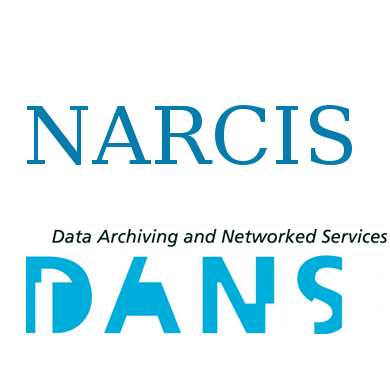Focal point
Location
National Academic Research and Collaborations Information System (NARCIS) is the main Dutch national portal for those looking for information about researchers and their work. NARCIS aggregates data from around 30 institutional repositories. Besides researchers, NARCIS is also used by students, journalists and people working in educational and government institutions as well as the business sector.
NARCIS provides access to scientific information, including (open access) publications from the repositories of all the Dutch universities, KNAW, NWO and a number of research institutes, datasets from some data archives as well as descriptions of research projects, researchers and research institutes.
This means that NARCIS cannot be used as an entry point to access complete overviews of publications of researchers (yet). However, there are more institutions that make all their scientific publications accessible via NARCIS. By doing so, it will become possible to create much more complete publication lists of researchers.
In 2004, the development of NARCIS started as a cooperation project of KNAW Research Information, NWO, VSNU and METIS, as part of the development of services within the DARE programme of SURFfoundation. This project resulted in the NARCIS portal, in which the DAREnet service was incorporated in January 2007. NARCIS has been part of DANS since 2011.
DANS - Data Archiving and Networked Services - is the Netherlands Institute for permanent access to digital research resources. DANS encourages researchers to make their digital research data and related outputs Findable, Accessible, Interoperable and Reusable.
Members:
Resources
Displaying 466 - 470 of 1863Ontwerpen aan klimaatadaptatie : plannen voor het ondenkbare
In Nederland zal het natter worden ten gevolge van de klimaatverandering. Meer regens, meer smeltwater in rivieren en een stijging van de zeespiegel zorgen voor een groter risico op overstromingen. Daarmee wordt klimaatverandering een niet weg te denken element in waterbeheer, kustverdediging, stedelijke ontwikkeling en natuurbeheer. Ieder ontwerp voor stedelijke of gebiedsontwikkeling zal rekening moeten houden met de mogelijke gevolgen van de opwarming van de aarde, of met een mooi woord ‘klimaatbestendig’ moeten zijn.
Species in a dynamic world: Consequences of habitat network dynamics on conservation planning
Habitat dynamics (habitat turnover due to natural perturbations or human activity) are commonplace, particularly in intensively used landscapes. Conservation planning requires an understanding of how spatio-temporal habitat dynamics and species characteristics interact with and relate to species persistence. We conducted a systematic literature review to determine how spatial and temporal properties of habitat networks can be changed to improve species viability in dynamic landscapes.
The political ecology of land management in the oil palm based cropping system on the Adja Plateau in Benin. NJAS - Wageningen
The Adja plateau (Benin) is densely populated by tenant and landowner farmers engaged in oil palm based cropping. Landowners use oil palm sap for the production of sodabi (a local spirit), and an oil palm fallow (if no crops are grown beneath the palms) to restore soil fertility. In this area, growing oil palm for its oil is uncommon. Tenants access the land under specific contracts but are not allowed to plant oil palm.
Linear trends in seasonal vegetation time series and the modifiable temporal unit problem
Time series of vegetation indices (VI) derived from satellite imagery provide a consistent monitoring system for terrestrial plant productivity. They enable detection and quantification of gradual changes within the time frame covered, which are of crucial importance in global change studies, for example. However, VI time series typically contain a strong seasonal signal which complicates change detection. Commonly, trends are quantified using linear regression methods, while the effect of serial autocorrelation is remediated by temporal aggregation over bins having a fixed width.



